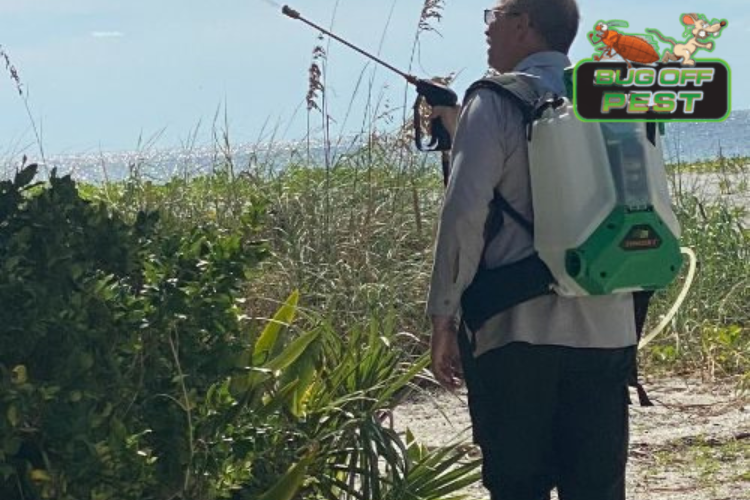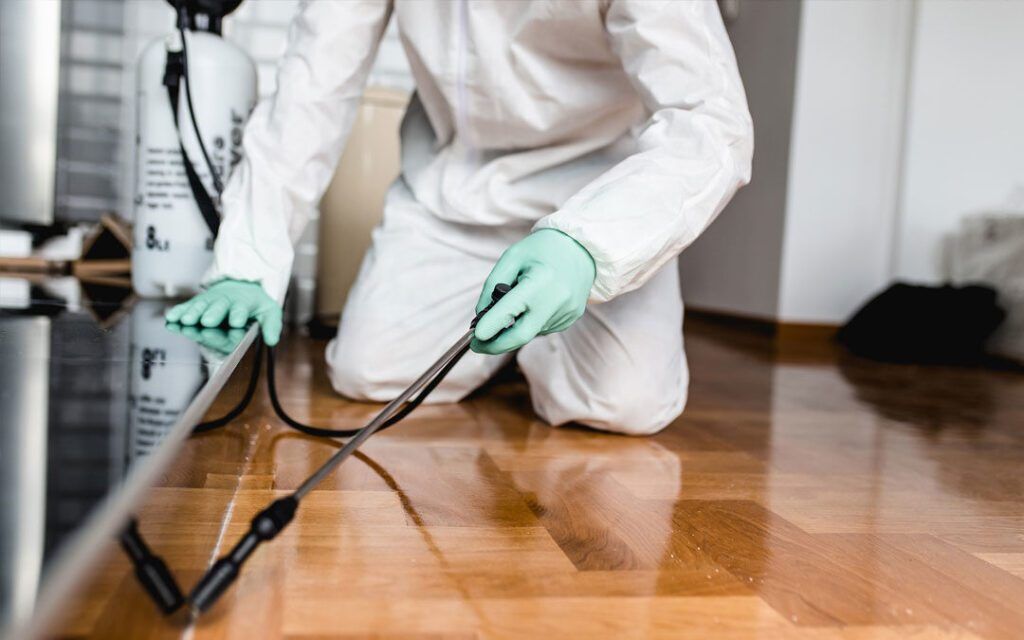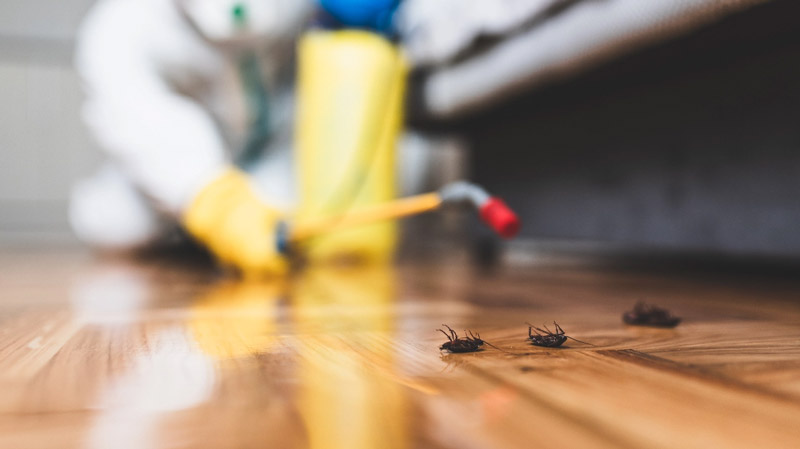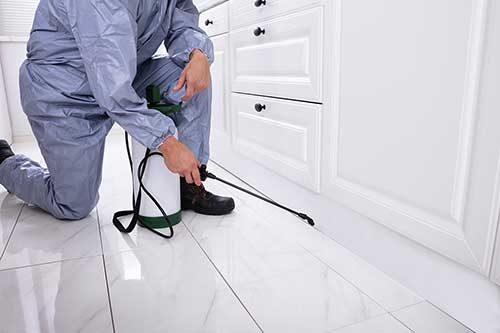Top-Rated Port Charlotte Pest Control Service
Comprehensive Guide to Comprehending Pest Control Methods and Their Therapy
Comprehending bug control approaches is essential for efficient management of unwanted microorganisms that pose risks to health and wellness, farming, and property. This extensive guide will certainly explore numerous techniques, consisting of chemical services, organic techniques, and mechanical strategies, all under the umbrella of Integrated Insect Management (IPM) As we take a look at these approaches, it comes to be significantly clear that the choice of method can significantly influence both human passions and eco-friendly equilibrium. What elements should be thought about when selecting the proper insect control method for a particular scenario? The response may result in even more lasting practices than one may originally assume.
Review of Parasite Control Methods
Bug control approaches incorporate a selection of approaches developed to manage and eliminate undesirable microorganisms that can harm human wellness, agriculture, and property. Reliable insect management is important for keeping the integrity of communities and ensuring the security of food products. These methods can be generally classified into three key methods: social, mechanical, and biological controls.

Cultural control includes customizing farming techniques or environmental conditions to minimize bug facility and recreation. This strategy includes crop rotation, sanitation, and choosing pest-resistant plant ranges. Mechanical control relies on physical barriers or devices to stop insect gain access to or straight remove them. Instances include catches, webs, and hand-picking unsafe pests.
Biological control utilizes natural predators, bloodsuckers, or virus to regulate pest populaces. This approach emphasizes ecological equilibrium and can consist of introducing helpful bugs, such as ladybugs or predative nematodes, to take care of bug existence.
Integrated bug monitoring (IPM) integrates these techniques, utilizing a holistic method that stresses prevention, monitoring, and liable administration. By utilizing a blend of these methods, parasite control can be a lot more sustainable and efficient, reducing reliance on chemical treatments while safeguarding human wellness and the setting.

Chemical Insect Control Solutions
A variety of chemical insect control solutions are offered, offering effective choices for handling parasite populations when other approaches may fail. These remedies mainly include pesticides, herbicides, fungicides, and rodenticides, each developed to target certain pests while lessening injury to non-target microorganisms.
Insecticides are especially reliable against a variety of bugs, consisting of ants, roaches, and termites, and can be classified as contact or systemic agents. Get in touch with insecticides eliminate parasites on contact, while systemic insecticides are absorbed by plants, making them harmful to pests that feed on them. Herbicides are utilized to control unwanted plants, whereas fungicides are crucial for managing fungal illness that can damage crops and ornamental plants.
Additionally, incorporated bug monitoring (IPM) principles ought to be employed, integrating chemical options with cultural, mechanical, and biological approaches for lasting insect control. This alternative method not only improves pest management performance yet additionally minimizes prospective environmental effects associated with chemical usage.
Biological Parasite Control Methods
Biological bug control techniques offer an eco-friendly option to chemical approaches by using natural predators, bloodsuckers, or pathogens to handle pest populaces. This method leverages the environmental partnerships between organisms, advertising a balanced community while minimizing chemical deposit in the atmosphere.
One of the most usual biological control techniques entails the introduction of natural opponents. For example, ladybugs are utilized to regulate aphid populaces, while parasitic wasps can target caterpillars and various other pests. These natural killers successfully reduce pest numbers without hurting advantageous bugs.
In addition, Click Here microbial agents such as bacteria, fungis, and infections are used to infect and kill certain parasites. Bacillus thuringiensis (Bt), a naturally taking place bacterium, is widely used to manage caterpillars and other larvae, showcasing the efficiency of microbial parasite control.

Physical and Mechanical Techniques
Often used in integrated bug administration techniques, physical and mechanical methods offer as effective devices for managing parasite populaces without using chemicals. These techniques rely on physical obstacles, traps, and other mechanical tools to avoid or eliminate pests, making them eco-friendly options.
Physical approaches include the use of barriers such as insect netting, displays, or row covers that literally block pests from accessing plants. This is specifically beneficial in farming settings where plant security is vital. Additionally, habitat manipulation, such as getting rid of debris and standing water, can reduce bug reproducing sites, consequently lessening problems.
Mechanical methods include catches, which can be designed to capture certain parasites. Sticky traps and pheromone catches prevail examples that draw and preserve insects, promoting monitoring and control. Vacuuming is another mechanical strategy, effective for getting rid of insects from indoor atmospheres, specifically in instances of invasions.
Preventative Insect Administration Approaches
Effective preventative pest management techniques are crucial for maintaining healthy environments look at this now and reducing pest-related concerns before they arise (Pest Control in Port Charlotte, FL). These strategies focus on proactive steps that lower the likelihood of insect invasions by attending to the origin triggers

One more important strategy involves proper landscaping techniques (Pest Control in Port Charlotte, FL). Maintaining vegetation cut and away from structures can lower harborage areas for parasites. Likewise, implementing incorporated insect monitoring (IPM) methods that consist of monitoring bug populaces and utilizing biological controls can promote a balanced environment that naturally subdues pest numbers.
Education and training for personnel and homeowners on recognizing early indications of parasite activity are also crucial components of an efficient preventative program. By cultivating a setting of recognition and watchfulness, organizations and home owners can considerably enhance their bug administration efforts and protect their areas against future problems.
Verdict
Utilizing an Integrated Parasite Management (IPM) framework permits for the sustainable management of parasites while reducing environmental impact. Ultimately, a detailed understanding of these diverse bug try here control methods is vital for achieving successful outcomes in bug management campaigns.